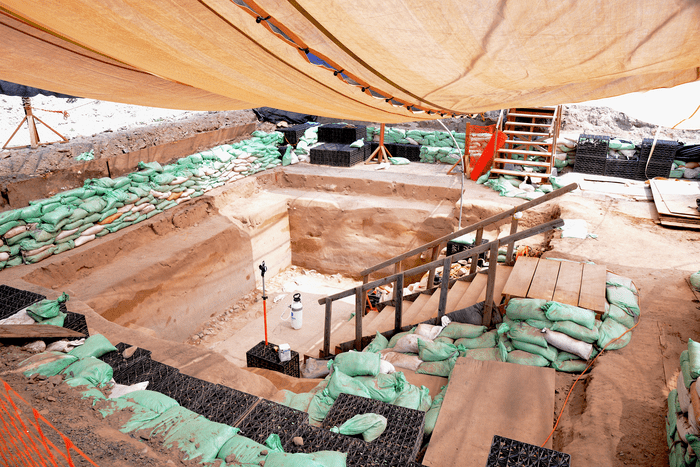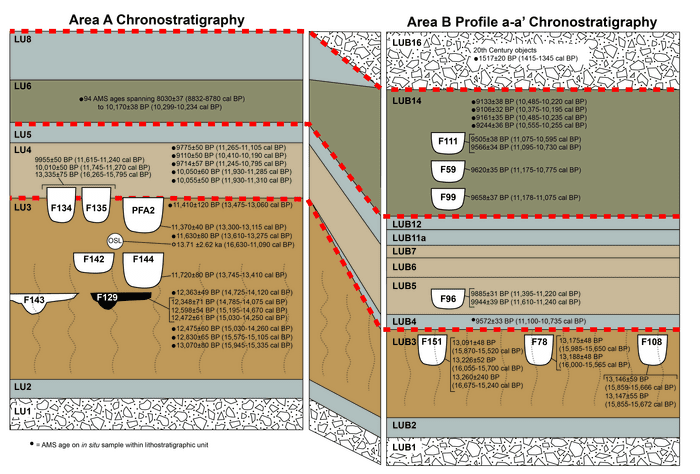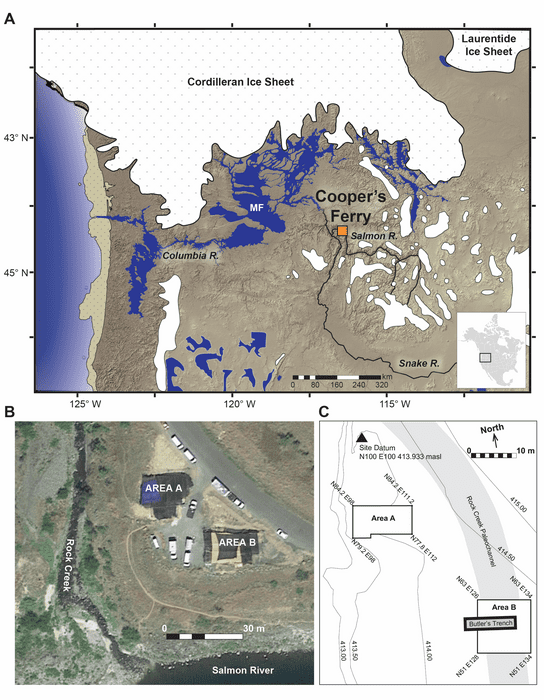A set of projectile points found at Coopers Ferry, Idaho, have been dated to 15,800 years old –making them the oldest found anywhere in the Americas. Despite the passage of time, they remain razor-sharp, and many are even beautiful.
The projectile points are not just 2,300 years older than the previous record holders found at the same site, but beat the oldest Clovis fluted points by 3,000 years. In doing so, they further discredit the once-widespread idea that the Clovis culture was the first in the Americas.
The tips were found between 2012 and 2017, but it’s only now precise dating has been reported. Most are made of cryptocrystalline silicates, although two are fine-grained volcanic rock. There are sources for both near the site.
The points each have a sharpened end as well as a stemmed one, and all appear symmetrical and beveled when seen head-on. Based on their size and shape, the authors believe they were mounted on darts, rather than arrows, let alone spears.

The area B site at Cooper’s Ferry where the points were found. Image Credit: Courtesy Loren Davis
To people unused to hunting by hand, the small size might indicate the points were designed for squirrels or rabbits, but as Professor Loren Davis of Oregon State University said in a statement: “Smaller projectile points mounted on darts will penetrate deeply and cause tremendous internal damage. You can hunt any animal we know about with weapons like these.” Application to mammoths or mastodons is probably difficult to verify experimentally, however.
“From a scientific point of view, these discoveries add very important details about what the archaeological record of the earliest peoples of the Americas looks like,” Davis said. “It’s one thing to say, ‘We think that people were here in the Americas 16,000 years ago;’ it’s another thing to measure it by finding well-made artifacts they left behind.”
The stone points can’t be dated directly, but were found in a layer of soil between two loess deposits. Items in the same layer as the points elsewhere on the site can be dated with a precision of around 300 years, which is consistent with the loess ages.

Stratigraphic model of the Cooper’s Ferry site, showing the distribution of cultural features from fire pits to tools, ages established by radiocarbon and optically stimulated luminescence, sediment layers and buried soils as exposed by excavations in Area A and Area B. Image Credit: Courtesy Loren Davis
Besides their age, what struck Davis and co-authors about the points was how different they looked to those made by the Clovis culture thousands of years later. It’s not, however, like anthropologists have never seen anything like these before. Strikingly similar points have been found in Hokkaido, Japan, and dated to 19,000-20,000 years ago. If the Coopers Ferry toolmakers were direct descendants of those from Hokkaido, it narrows the timing of the arrival in the Americas substantially.
“The earliest peoples of North America possessed cultural knowledge that they used to survive and thrive over time. Some of this knowledge can be seen in the way people made stone tools,” Davis said.

When the projectile points were used, Coopers ferry was near uncomfortably close to the southern end of the ice sheet that covered half of North America. Apparently some people liked it that way. Image Credit: Courtesy Loren Davis
Coopers Ferry, located on the Salmon River, must have been an excellent place to camp during the Ice Age, despite the proximity to the northern ice sheet. The team has found over 65,000 items at the site, including not only tools such as these but the remains of a horse. Occupation may not have been continuous, but people were present there many times over thousands of years, with a 14,200-year-old fire pit previously described by the OSU team.
The paper is published open access in Science Advances
Source Link: These Are America’s Oldest Known Projectile Tips By Thousands Of Years